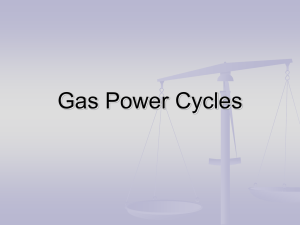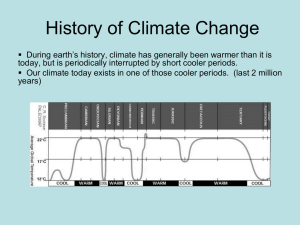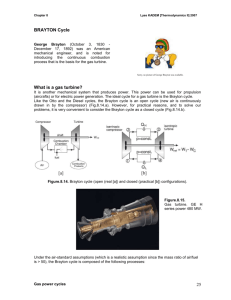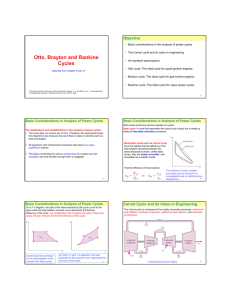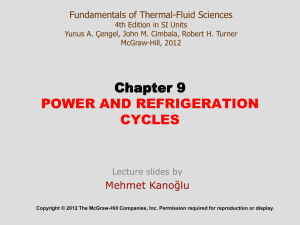ME 252 Review: Midterm Exam #1
advertisement
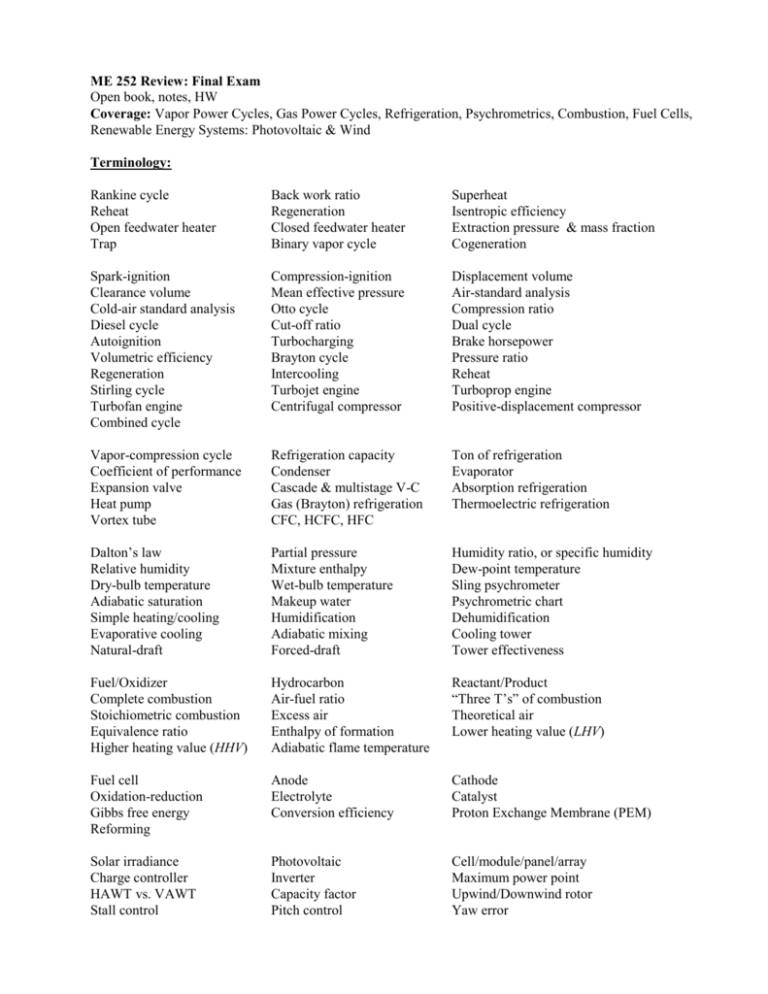
ME 252 Review: Final Exam Open book, notes, HW Coverage: Vapor Power Cycles, Gas Power Cycles, Refrigeration, Psychrometrics, Combustion, Fuel Cells, Renewable Energy Systems: Photovoltaic & Wind Terminology: Rankine cycle Reheat Open feedwater heater Trap Back work ratio Regeneration Closed feedwater heater Binary vapor cycle Superheat Isentropic efficiency Extraction pressure & mass fraction Cogeneration Spark-ignition Clearance volume Cold-air standard analysis Diesel cycle Autoignition Volumetric efficiency Regeneration Stirling cycle Turbofan engine Combined cycle Compression-ignition Mean effective pressure Otto cycle Cut-off ratio Turbocharging Brayton cycle Intercooling Turbojet engine Centrifugal compressor Displacement volume Air-standard analysis Compression ratio Dual cycle Brake horsepower Pressure ratio Reheat Turboprop engine Positive-displacement compressor Vapor-compression cycle Coefficient of performance Expansion valve Heat pump Vortex tube Refrigeration capacity Condenser Cascade & multistage V-C Gas (Brayton) refrigeration CFC, HCFC, HFC Ton of refrigeration Evaporator Absorption refrigeration Thermoelectric refrigeration Dalton’s law Relative humidity Dry-bulb temperature Adiabatic saturation Simple heating/cooling Evaporative cooling Natural-draft Partial pressure Mixture enthalpy Wet-bulb temperature Makeup water Humidification Adiabatic mixing Forced-draft Humidity ratio, or specific humidity Dew-point temperature Sling psychrometer Psychrometric chart Dehumidification Cooling tower Tower effectiveness Fuel/Oxidizer Complete combustion Stoichiometric combustion Equivalence ratio Higher heating value (HHV) Hydrocarbon Air-fuel ratio Excess air Enthalpy of formation Adiabatic flame temperature Reactant/Product “Three T’s” of combustion Theoretical air Lower heating value (LHV) Fuel cell Oxidation-reduction Gibbs free energy Reforming Anode Electrolyte Conversion efficiency Cathode Catalyst Proton Exchange Membrane (PEM) Solar irradiance Charge controller HAWT vs. VAWT Stall control Photovoltaic Inverter Capacity factor Pitch control Cell/module/panel/array Maximum power point Upwind/Downwind rotor Yaw error You should understand: the various ways to increase the thermal efficiency of the Rankine cycle why reheating is used in vapor power cycles the differences between open and closed feedwater heaters the desirable characteristics of working fluids for vapor power cycles differences between Otto, Diesel, and Brayton cycles the function of turbocharging how intercooling, reheat, and regeneration affect Brayton cycle performance the differences between turbojet, turboprop, and turbofan aircraft engines differences between ideal and actual vapor-compression cycles refrigerant properties and the problem of ozone depletion modifications to vapor-compression cycles (cascading, multistaging) alternative refrigeration schemes (absorption, thermoelectric, Brayton, vortex tube) how a cooling tower operates how a fuel cell operates the fuel cell components and their desirable characteristics the H2-O2 fuel cell reaction the effect of temperature on fuel cell performance the different types of fuel cells, their uses, and relative advantages what reforming is the primary components of a stand-alone PV system the primary components of a wind turbine system You should know how to: analyze Rankine cycles with or without reheating and feedwater heating analyze Otto, Diesel, and Brayton gas power cycles using air-standard assumptions analyze turbocharged Otto and Diesel cycles analyze regeneration, intercooling, and reheat in Brayton cycles analyze ideal and actual vapor-compression refrigerators and heat pumps analyze gas (Brayton) refrigeration cycles sketch Rankine, Otto, Diesel, Brayton, and refrigeration cycles using T-s, P-v, and T-v coordinates analyze ideal and actual vapor-compression refrigerators and heat pumps select appropriate refrigerants and operating pressures/temperatures sketch vapor-compression refrigeration cycles using T-s coordinates determine humidity ratio, relative humidity, dew-point temperature, dry-bulb temperature, wet-bulb temperature, mixture enthalpy, and mixture specific volume from the psychrometric chart or exact equations determine vapor (partial) pressure from relative humidity perform mass and energy balances of moist air undergoing simple heating or cooling, humidification, dehumidification, evaporative cooling draw moist air processes on a psychrometric chart analyze cooling towers balance combustion reaction equations involving hydrocarbon fuels determine % excess air, % theoretical air, and air-fuel ratio determine dew-point temperature of water vapor in products perform an energy balance of a combustion chamber and determine the heat transfer or required fuel mass flow rate determine LHV and HHV of hydrocarbon fuels determine adiabatic flame temperature (even though this is an unreasonable computation for an exam)




